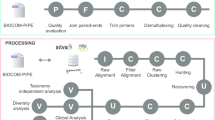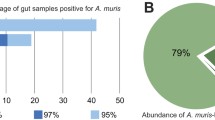Abstract
The potential for comparing microbial community population structures has been greatly enhanced by developments in next generation sequencing methods that can generate hundreds of thousands to millions of reads in a single run. Conversely, many microbial community comparisons have been published with no more than 1,000 sequences per sample. These studies have presented data on levels of shared operational taxonomic units (OTUs) between communities. Due to lack of coverage, that approach might compromise the conclusions about microbial diversity and the degree of difference between environments. In this study, we present data from recent studies that highlight this problem. Also, we analyzed datasets of 16 rRNA sequences with small and high sequence coverage from different environments to demonstrate that the level of sequencing effort used for analyzing microbial communities biases the results. We randomly sampled pyrosequencing-generated 16S rRNA gene libraries with increasing sequence effort. Sequences were used to calculate Good's coverage, the percentage of shared OTUs, and phylogenetic distance measures. Our data showed that simple counts of presence/absence of taxonomic unities do not reflect the real similarity in membership and structure of the bacterial communities and that community comparisons based on phylogenetic tests provide a way to test statistically significant differences between two or more environments without need an exhaustive sampling effort.


Similar content being viewed by others
References
Bartram AK, Lynch MD, Stearns JC, Moreno-Hagelsieb G, Neufeld JD (2011) Generation of multi-million 16S rRNA gene libraries from complex microbial communities by assembling paired-end Illumina reads. Appl Environ Microbiol 77:3846–3852
Caporaso JG, Kuczynski J, Stombaugh J, Bittinger K, Bushman FD, Costello EK et al (2010) QIIME allows analysis of high-throughput community sequencing data. Nat Met 7(5):335–336
DeSantis TZ, Hugenholtz P, Keller K, Brodie EL, Larsen N, Piceno YM, Phan R, Andersen GL (2006) NAST: a multiple sequence alignment server for comparative analysis of 16S rRNA genes. Nucleic Acids Res 34(suppl 2):W394–W399
Faith D, Lozupone C, Nipperess D, Knight R (2009) The cladistic basis for the phylogenetic diversity (PD) measure links evolutionary features to environmental gradients and supports broad applications of microbial ecology’s “Phylogenetic Beta Diversity” framework. Int J Mol Sci 10(11):4723–4741
Flores GE, Campbell JH, Kirshtein JD, Meneghin J, Podar M, Steinberg JI et al (2011) Microbial community structure of hydrothermal deposits from geochemically different vent fields along the Mid-Atlantic Ridge. Environ Microbiol 13(8):2158–2171
Giongo A, Gano KA, Crabb DB, Mukherjee N, Novelo LL, Casella G et al (2011) Toward defining the autoimmune microbiome for type 1 diabetes. ISME J 5(1):82–91
Good IJ (1953) The population frequencies of species and the estimation of the population parameters. Biometrika 40:237–264
Lemos LN, Fulthorpe RR, Triplett EW, Roesch LFW (2011) Rethinking microbial diversity analysis in the high throughput sequencing era. J Microbiol Methods 86(1):42–51
Lozupone CA, Knight R (2008) Species divergence and the measurement of microbial diversity. FEMS Microbiol Rev 32(4):557–578
Lozupone CA, Hamady M, Knight R (2006) UniFrac—an online tool for comparing microbial community diversity in a phylogenetic context. BMC Bioinformatics 7(1):371
Lozupone CA, Hamady M, Kelley ST, Knight R (2007) Quantitative and qualitative β diversity measures lead to different insights into factors that structure microbial communities. Appl Environ Microbiol 73(5):1576–1585
Shade A, Handelsman J (2011) Beyond the Venn diagram: the hunt for a core microbiome. Environ Microbiol 14(1):4–12. doi:10.1111/j.1462-2920.2011.02585.x
Sheneman L, Evans J, Foster A (2006) Clearcut: a fast implementation of relaxed neighbor joining. Bioinformatics 22(22):2823–2824
Thomas RK, Nickerson E, Simons JF, Janne PA, Tengs T, Yuza Y et al (2006) Sensitive mutation detection in heterogeneous cancer specimens by massively parallel picoliter reactor sequencing. Nat Med 12:852–855
Wang Q, Garrity GM, Tiedje JM, Cole JR (2007) Naïve Bayesian classifier for rapid assignment of rRNA sequences into the new bacterial taxonomy. Appl Environ Microbiol 73(16):5261–5267
Zhou J, Wu L, Deng Y, Zhi X, Jiang Y, Tu Q, Xie J et al (2011) Reproducibility and quantitation of amplicon sequencing-based detection. ISME J 5:1303–1313
Acknowledgments
LFW Roesch and LN Lemos were funded by the CNPq (process number 503370/2009-6).
Author information
Authors and Affiliations
Corresponding author
Rights and permissions
About this article
Cite this article
Lemos, L.N., Fulthorpe, R.R. & Roesch, L.F.W. Low sequencing efforts bias analyses of shared taxa in microbial communities. Folia Microbiol 57, 409–413 (2012). https://doi.org/10.1007/s12223-012-0155-0
Received:
Accepted:
Published:
Issue Date:
DOI: https://doi.org/10.1007/s12223-012-0155-0




